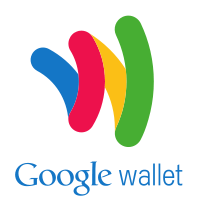One of the reasons that mobile app developers make more by selling through Amazon than they do in Google Play’s app store, and they make significantly more, is the comparative ease of purpose. Since the Kindle Fire and the Amazon Appstore for Android in general are linked to a user’s Amazon.com account and therefore their stored payment options, anything the user desires is just a click away. Impulse purchases are almost dangerously simple and the whole ecosystem is set up to encourage frequent indulgence.
 By comparison, Google Wallet has largely been a failure. It was always just a bit too clunky to use easily and customers are far less likely to offhandedly make $0.99 purchases here and there when they have to put work into making it happen. For a number of reasons, mostly having little to do with app sales, Google has finally addressed the problem and made everything simpler.
By comparison, Google Wallet has largely been a failure. It was always just a bit too clunky to use easily and customers are far less likely to offhandedly make $0.99 purchases here and there when they have to put work into making it happen. For a number of reasons, mostly having little to do with app sales, Google has finally addressed the problem and made everything simpler.
The new and improved Google Wallet might be compared to Google Voice. You have an account number for your wallet and it simply links through to your preferred stored payment option. Their new approach allows users to make use of any credit or debit card without going to the trouble of repeatedly entering its information. For the app side of things, this ends up working much like Amazon’s one-click purchasing.
The main motivation for this change is actually point of purchase transactions. Much like PayPal’s current experiments with Home Depot, which allow customers to pay using their PayPal defaults, Google Wallet can theoretically be used to turn a smartphone into a valid option for retail purchasing. Since that option requires the user to have an NFC-enabled phone and the store in question to be equipped to accept such transactions, this is still of limited use for many people. Adoption of such options is increasing rapidly, though, so the push makes sense.
The big issue that may now finally be settled is that of whether Amazon’s Appstore provides better compensation because of its content and implementation or just because of the convenience. The curated selection offered by Amazon does tend to lend itself to higher quality apps with little of the deliberately exploitative content that remains common on Google Play, but it results in a somewhat weaker selection. This might be Google’s chance to catch up.
Realistically it’s going to be a long while before the developer compensation rate matches between the two stores, if it happens at all. The Kindle Fire is still the largest Android Tablet presence at the moment regardless of the superior performance and popular reception of Google’s Nexus 7. If the Kindle Fire 2 is not a complete failure then it’s hard to imagine things being completely turned around. Narrowing the gap is a good step, though. I’ve mentioned here before that close competition is good for the consumer and that remains as true in the Amazon vs Google sales comparison as it has been in the Kindle vs Nook contest.